Monday 6th July 2015
Our first Shinkansen (bullet train) experience
Our JR passes were validated and we were ready to travel the 320 miles from Tokyo to Kyoto in just over two hours. We headed to the station by metro to catch the bullet train that we had booked seats on the day before. Once again we got lost and ended up at the wrong station, from which we needed to catch a local train to Tokyo Station to get the bullet train. Luckily the Shinkansen are pretty frequent so we went to the ticket desk at Tokyo Station and booked seats on the train about an hour later.
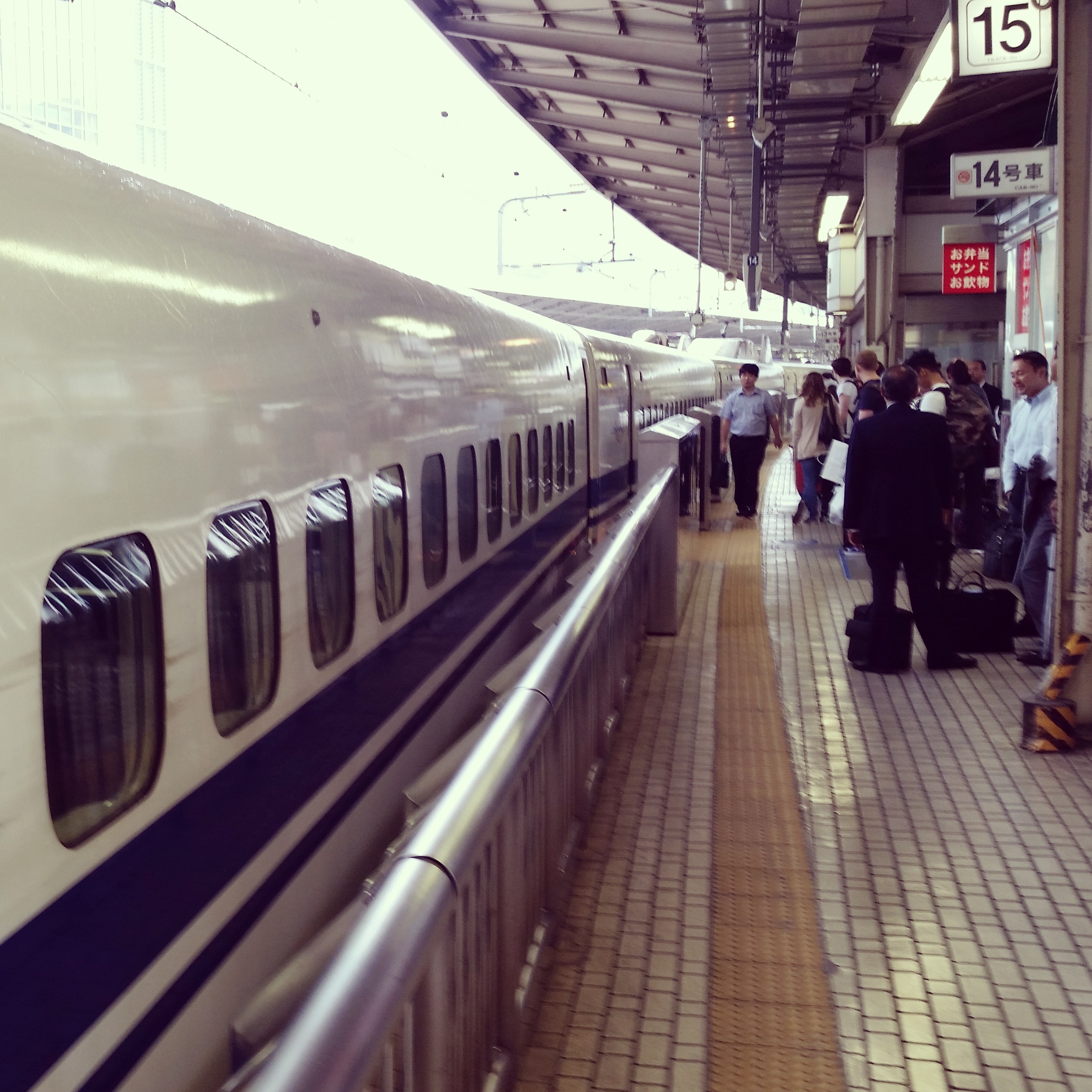
Sending luggage in Japan
We travelled to Japan with two large cases which, considering the amount of metro station stairs we walked up and down, was pretty silly. We planned to climb Mount Fuji during our second week so one case was full of clothes and equipment for that. I emailed the hotel (Sawa Hotel in Kawaguchiko) near Fuji that we were saying in and asked if it would be ok to forward our case in advance and they said it wasn’t a problem. Forwarding luggage (Takuhaibin) in Japan is really common and we’d seen the company ‘Yamato’ mentioned a lot. We saw the Yamato logo (black cat carrying her kitten on a yellow background) all over Japan but it was a different company that we ended up using, which were based in Tokyo Station. It cost less than £15 to send a big case from Tokyo to Kawaguchiko and saved us from carrying it all over Japan. Definitely worth the money and I’d highly recommend it, especially if you’re carrying climbing equipment for Fuji. I think it took a couple of days for the suitcase to get to the hotel but it was about a week until we got to Kawaguchiko and it was sitting waiting for us when we arrived.
Bentos and bullet trains
Before boarding the bullet train, we each picked up one of the Shinkansen bento boxes from a vendor in the station.
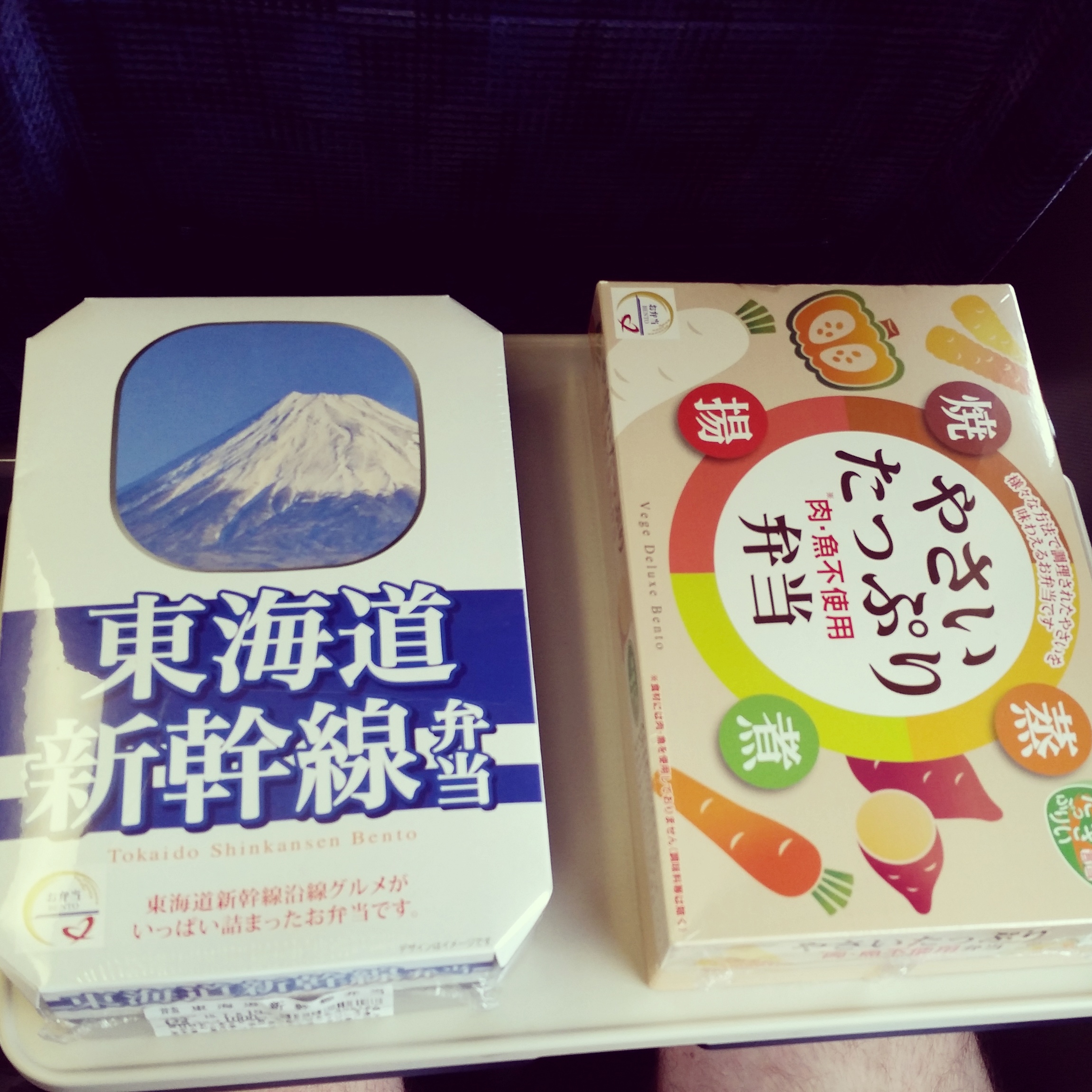
The bentos are all pre-made with cold food inside and I found it to be quite…interesting. Some of it was tasty but some of it I really couldn’t recognise and was a little odd.
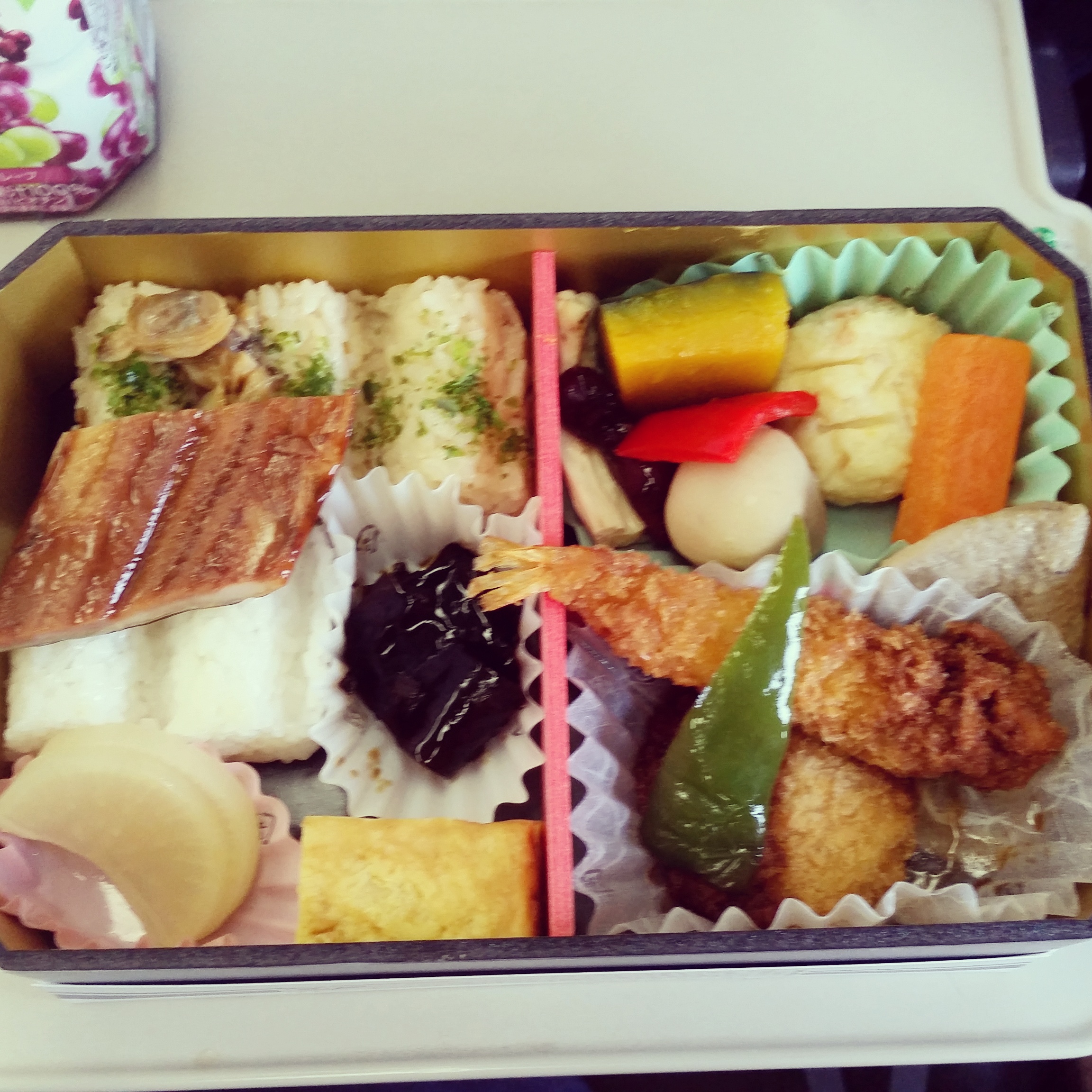
I expected the inside of the bullet trains to look as futuristic as the outside but they were just normal looking trains with rows of either two seats or three seats on each side. The rows of seats can be turned around so you are always facing the direction of travel or, if you are with a group, the seats can be turned to face each other. One thing that stands out is how clean the trains are. When they arrive at the final station, before new passengers get on, a cleaning crew board the trains and clean them super quickly with Japanese efficiency. Oh and another thing that I loved – when the staff go through the train, they turn and bow to your carriage before going through the door to the next carriage.
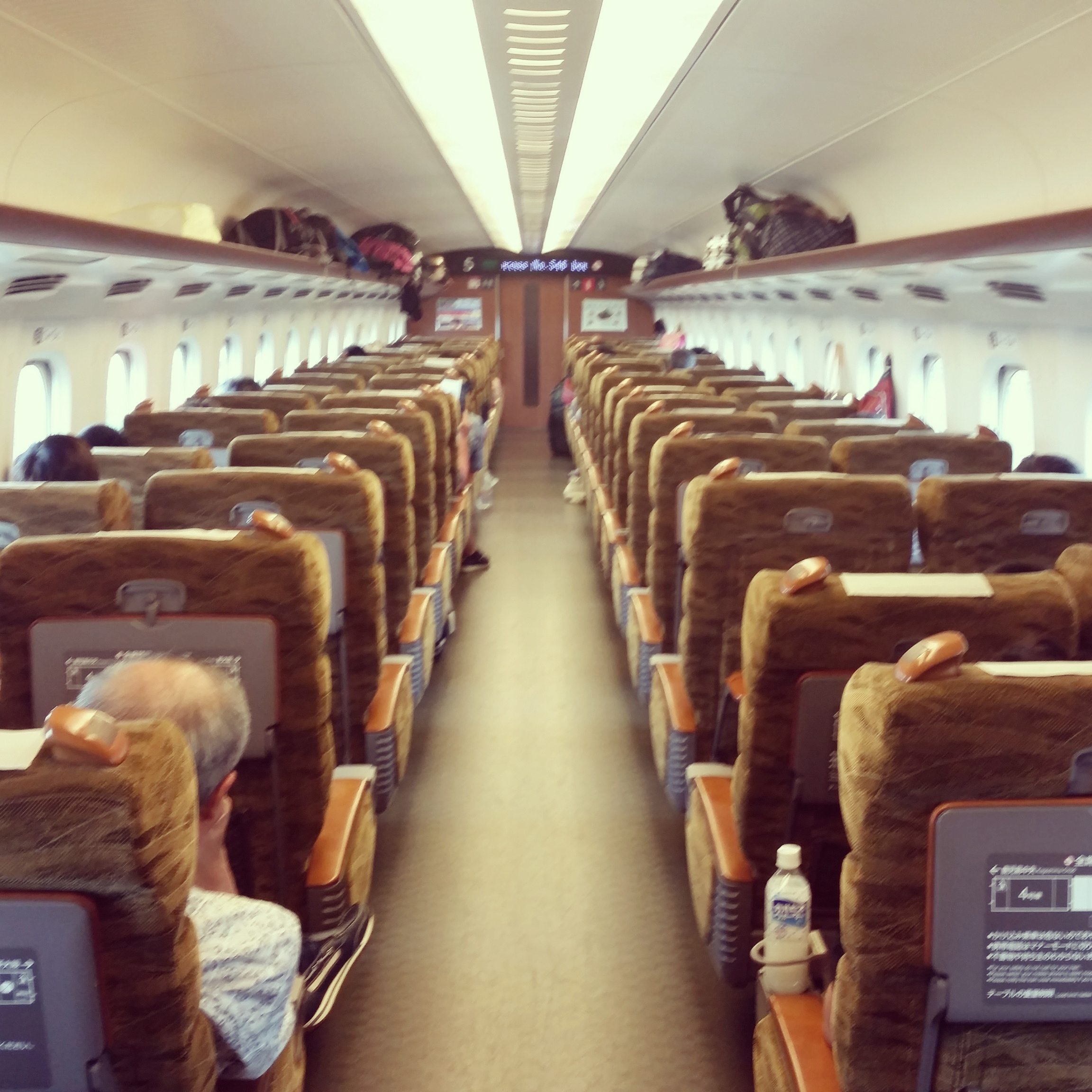
There isn’t a lot of room for luggage on the Shinkansen but we always found space for our (remaining) suitcase behind the last row of seats, plus there is a lot of leg room per seat so it’s possible to put some bags at your feet. The bullet trains travel at about 200mph but they are so smooth that we didn’t really notice the incredible speed. However a few times, when the train must have been at maximum speed and the scenery is just a blur out the window I did think ‘woah – this is fast!’. And, again with true Japanese efficiency, we arrived at Kyoto right on time.
Arriving in Kyoto!
Accommodation: Fami Kamitonoda, Kyoto, booked through booking.com for about £81 a night (for 2 people)
Our apartment in Kyoto was right beside Kyoto Station so an amazing location for exploring. The owner sent fantastic directions from the station, advising which exit to leave from, so we found it no problem. It was a decent size for Japan, with a little kitchenette and bathroom that doubled as a little room that heated up and dried clothes super quickly – handy. The bath had a control panel instead of a tap – you select the temperature you want and then the start button for the bath to run. All baths are tiny in Japan but quite deep.
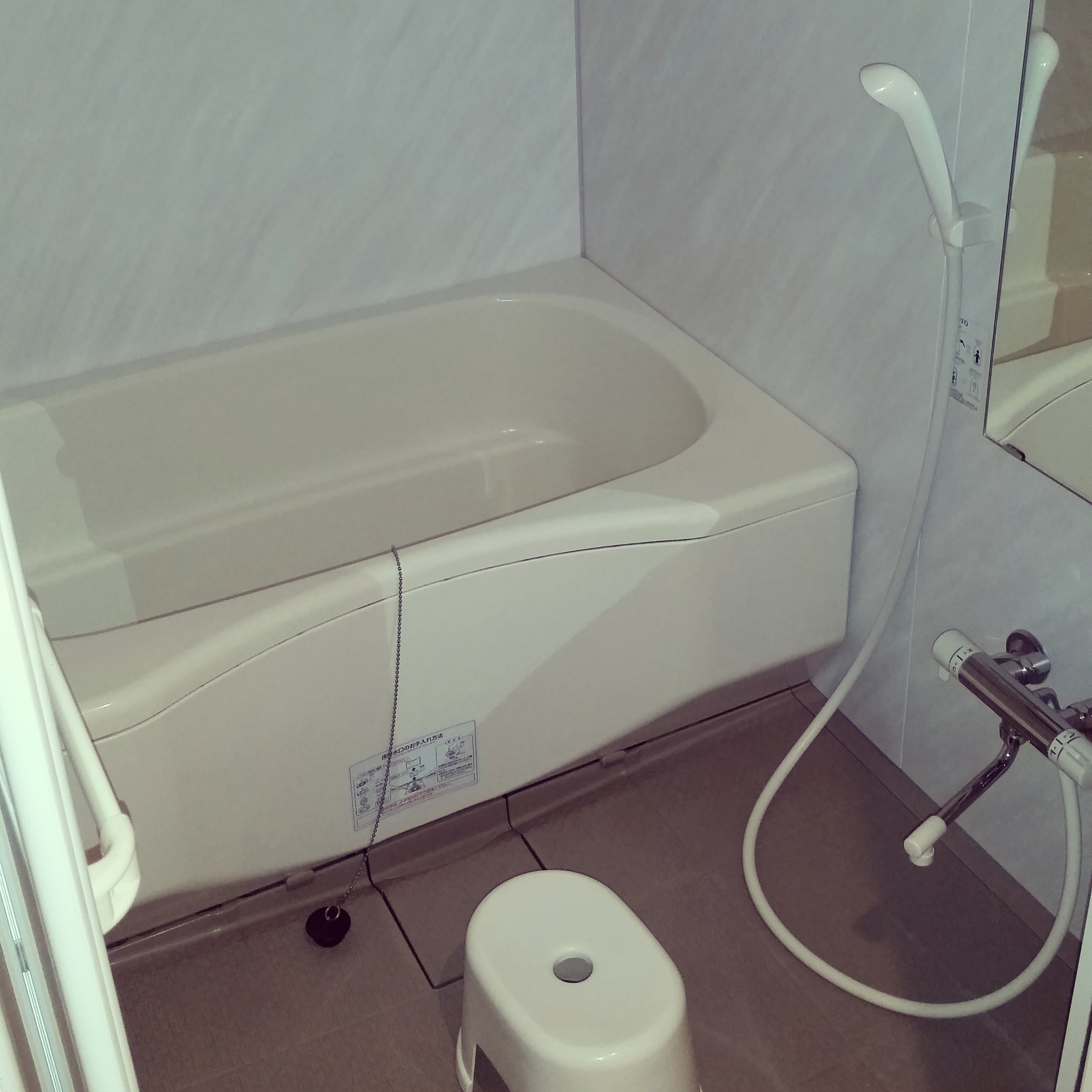
Most of our hotels/apartments had private en suites as we were keen to avoid shared bathrooms where possible. A ‘shared’ bathroom in Japan is generally seated showers (to clean) followed by a shared bath (to relax), all in the nude. The majority of our en suite bathrooms were like a wet room with a shower head that you moved from the bath to the shower (and sometimes a sink). I’ll mention ‘bathing’ more later when I talk about our nerve wracking naked-with-strangers onsen experience!
Becoming Samurai warriors
After checking in, dumping our bags and playing with the high tech bathroom, we headed out to learn to be Samurai warriors! Before travelling to Japan, we booked a Samurai demonstration and lesson at Samurai Kembu Theatre after seeing amazing reviews for it on TripAdvisor. We booked ‘Package B’, which was JPY 8,000 (about £45) each and lasted about two hours. We arrived at the theatre and were asked to sit in the waiting area. There were about eight of us altogether and while we waited, we selected our Samurai outfits!
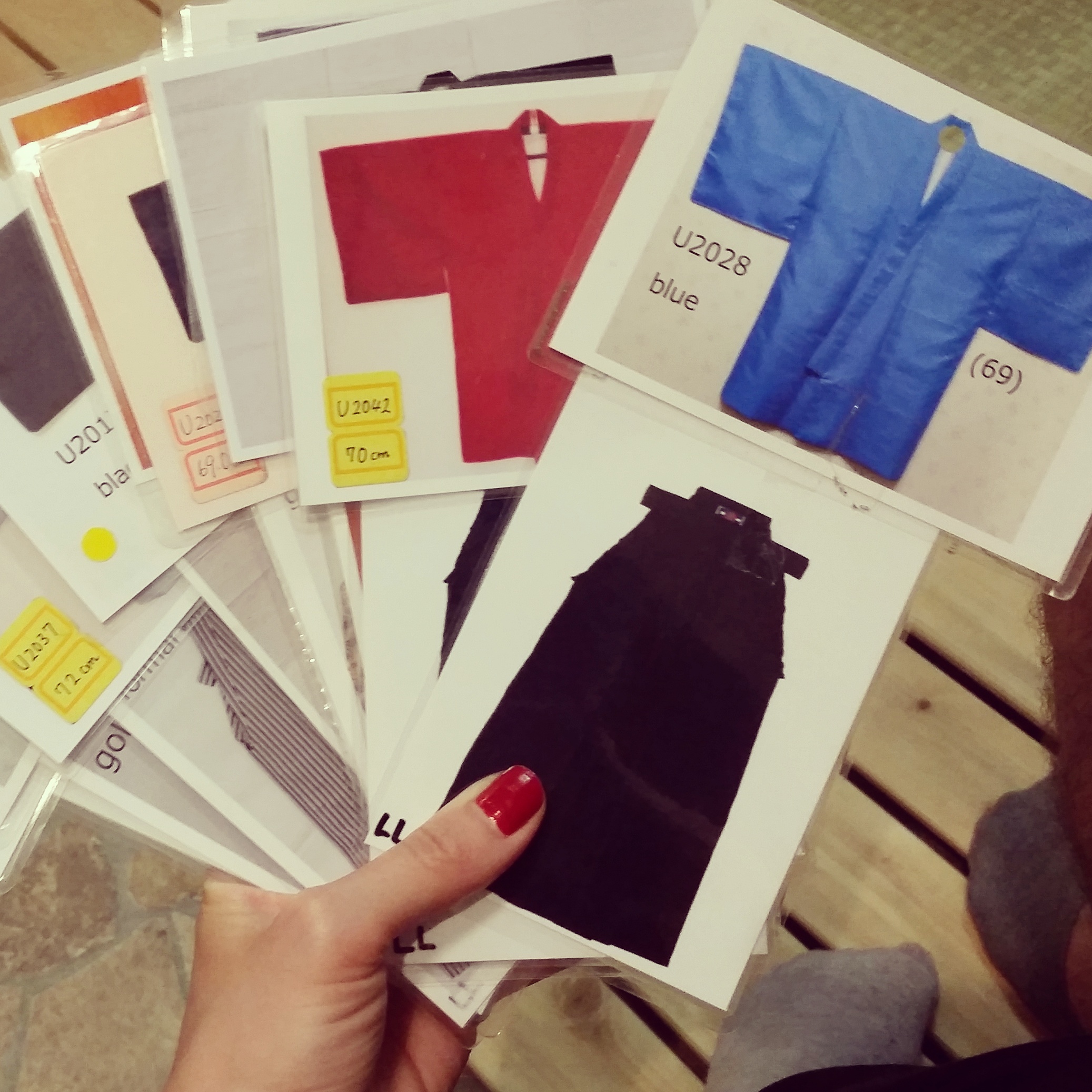
We all went through to the theatre, which had about 20 low seats in front of a stage and were given blankets as the room got chilly during the performance. The show is about an hour long and tells you the history of Samurai through a few different performances. It is performed by the ‘kembu masters’ who all had amazing death stares! We were asked not to take any photos during the show, and then when the show had ended we were invited to take pictures of (and with) the kembu masters.
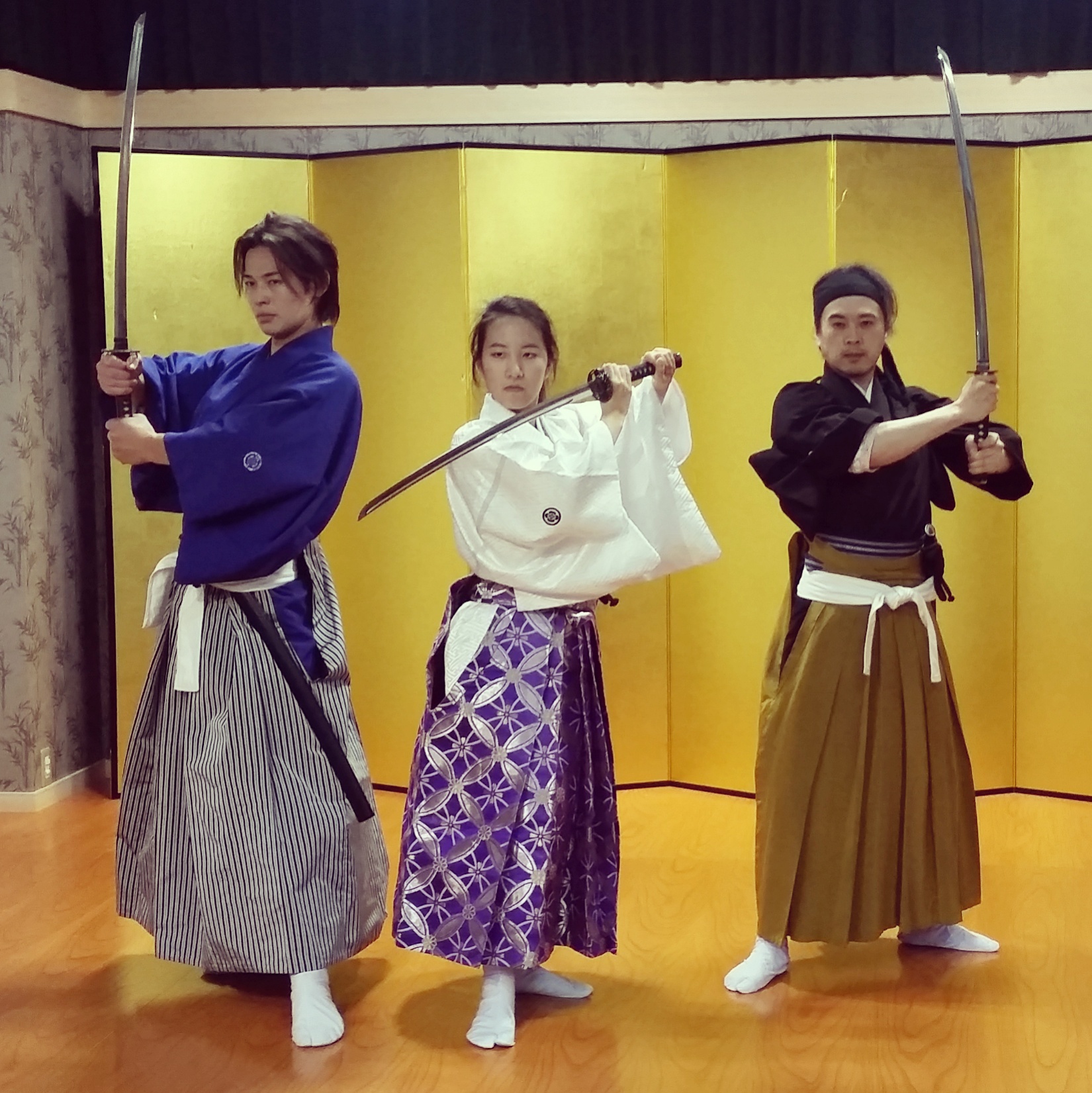
After the show was the really fun part! We each were helped to dress in the Samurai outfits that we had selected earlier and then were given a lesson by one of the kembu masters. We were each given a Samurai sword (unsharpened…) and taught a few moves which we put together in a little routine and performed at the end. Once we had finished the lesson, the staff took a few pictures of each group and then were very patient while we requested lots of photos on our cameras.
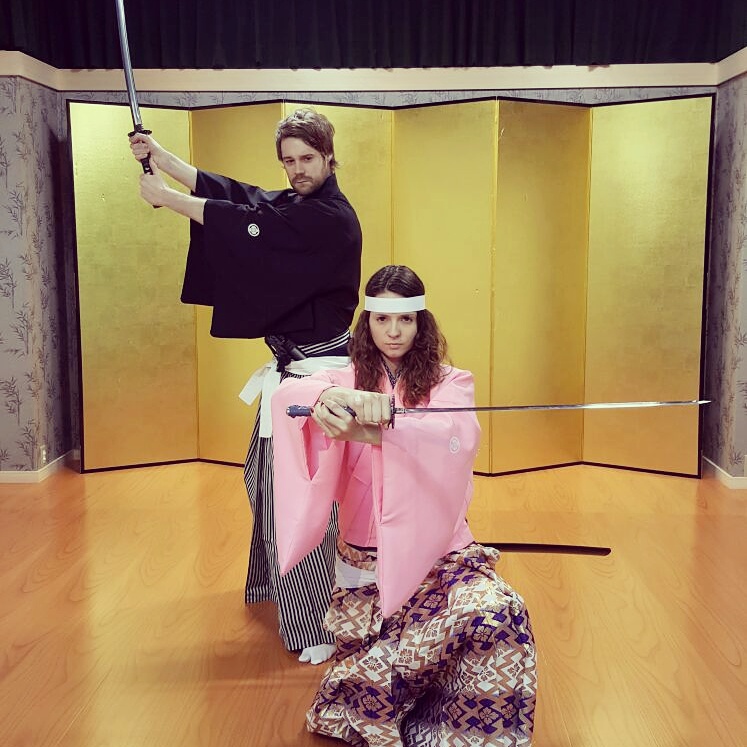
The whole experience was really good fun and I highly recommend it if you are in Kyoto. In a lot of countries, the photos that were taken would have been sold to us at the end but they were given to us to take away along with traditional tabi socks and a neck scarf, which was a really nice touch and souvenir.
The staff were really friendly and we asked them for a recommendation for dinner, which they noted down on a piece of paper in Japanese characters and pointed us in the right direction. After about 30 minutes of wandering around Kyoto trying to match up the characters on the paper with restaurant signs, we gave up and found a ramen place, which was delicious (of course!).
After dinner we headed back to our apartment, via a stop off at a Pachinko parlour that was beside where we were staying. A helpful Japanese man gave us instructions in English and tried to explain the rules to us. Although David managed to win some of the silver balls back, we resigned ourselves to never fully understanding Pachinko…
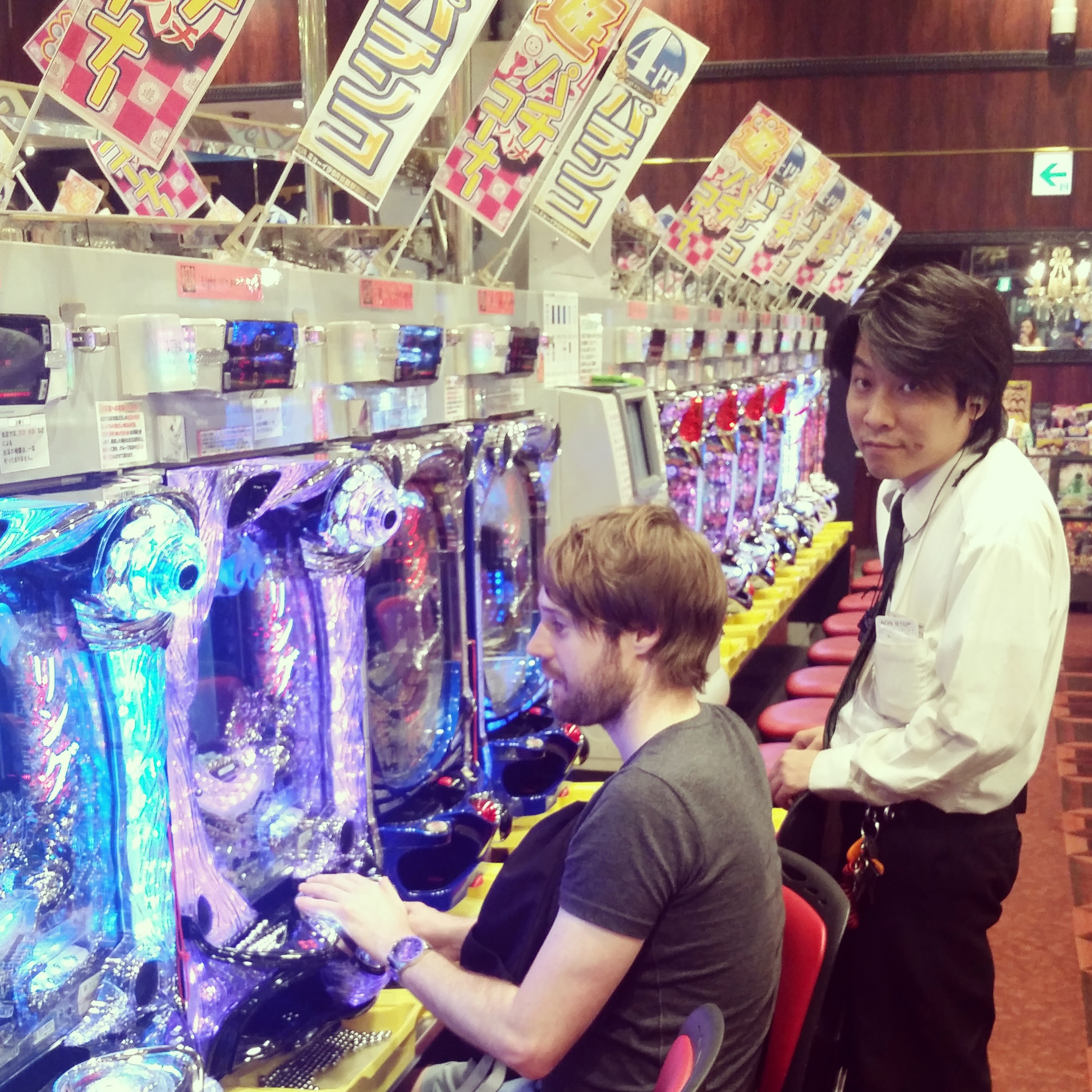
Pingback: Nana (Osaka) – boldtraveller
Pingback: Kyu (Takeno) – boldtraveller
Pingback: Jū ni (Mount Fuji) – boldtraveller
Pingback: Jū yon (Tokyo) – boldtraveller